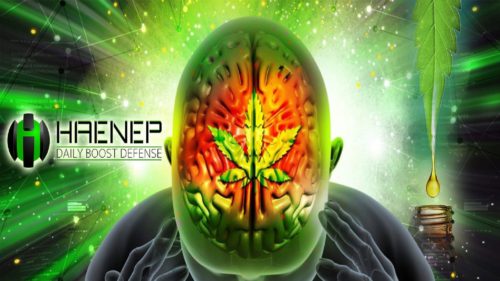Kamba Wellness Empowering People’s Lives!
Posted December 26, 2019 2:53 am by healthclubnews


Kamba Wellness
Kamba Wellness is a progressive CBD wellness company seeking to enhance the emotional, mental, and physical well-being of individuals and pets by providing the safest and highest quality wellness products. We thrive on bringing general education about CBD to consumers while giving back to nonprofits and communities which serve our customer base. One of our strong education points is on the endocannabinoid system (ECS). Although many schools have not taught about the ECS in the past because little was known about it, it has been recently been added to curricula around the globe to help people understand how their bodies function and the benefits of CBD.
Our bodies naturally produce cannabinoids called endogenous cannabinoids (endocannabinoids, therefore, making up our ECS. The ECS and its receptors are responsible for controlling cognitive responses such as appetite, internal balance, metabolic control functions like the storage and transport of nutrients, can act on peripheral tissues like the gastrointestinal tract, skeletal muscles, and endocrine glands. Information gathered from scientific research has shown how the use of CBD can serve to assist people and pets through the production of brain health, bone health, pain relief, enhance immune system activities, heart health, anxiety and depression, improves quality of sleep and is a possible source of alternative medicine.
It is impossible to discuss the benefits of the ECS without making references to its receptors. The cannabinoid receptors (CB1 and CB2) are the primary sites for the activity of cannabinoids. Cannabinoids are lipid-based neurotransmitters that are neither indwelling (endocannabinoids) or can be extracted from plants (phytocannabinoids). These cannabinoids are configured to interact with the active sites of CB1 and CB2 receptors to bring about therapeutic benefits.
The CB1 receptor is predominantly found in the central nervous system and other peripheral organs like the liver and pancreas. They are the primary site of action for anandamide (endocannabinoid) or tetrahydrocannabinol (THC) derived from the cannabis plant. The CB1 receptors are widely distributed in fat cells, fat, digestive system, lungs, liver, blood vessels and the heart.
The CB2 receptors are expressed as in the immune system and play active roles in the release of cytokines and other immune-based molecules. It is the primary site of activity for 2-arachidonoylglycerol (2-AG) and endocannabinoid and CBD, its phytocannabinoids counterpart. Although they are not widely distributed as the CB1 receptors, their massive presence in the gastrointestinal system, immune system and spleen have been shown to be responsible for several therapeutic benefits of CBD including energy metabolism, food intake, inflammation, pain management and the regulation of appetite. They also play a significant role when it comes to the treatment of epileptic seizures. Contrary to what is obtainable in CB1 receptors, information gathered from research has shown that dogs contain about 30 times less binding affinity than in humans and rat population. The extent of its activity is determined by the type of signaling pathways involved and the expression of cell membranes.
Hot Spot Ads
- Master Life-Saving Skills: American Heart Association CPR, First Aid, AED, BLS, ACLS, and PALS Training in Augusta, GA at Pulse CPR and First Aid School!
- The Ultimate Keto Meal Plan
- 300 Vegan/Plant Based Recipe Cook Book
- Kaldi Goats Coffee
- Giraffe Nuts CBD ( Post Workout Recovery)
- TIRED OF BEING OVERWEIGHT?
- Pulse Fitness Martinez
- Latest CBD Gummies and Oils!
- Bye-Bye Belly Fat!
- Hardest thing about weight loss is keeping it gone after you lose it!
- Plank Trainer…Planks don’t just work your core: They work your entire body.
- Click here —>Revenue-Based Gym Financing: How a Revenue-Based Gym Loan Works
- Click here —>Revenue-Based Gym Financing: How a Revenue-Based Gym Loan Works
- 4 Signs it’s Time to Hire a Lead Generation Company for your Gym.
- Dr. Esselstyn’s Prevent & Reverse Heart Disease Program
- Xponential Fitness grew from one man’s dream to a boutique fitness powerhouse Flip through the digital issue:
- Debra Strougo co-founded Row House with her husband, Eric Von Frohlich, and built it into one of the hottest studios in the business.
- Is The 1 Minute Weight Loss Program The Solution For You?
- Bodybuilding Beef Jerky!
- Feetlu Foldable Exercise Mat
- Delicious, Easy-To-Make Smoothies For Rapid Weight Loss & Incredible Health!
- My Daily Choice
- Buy Plus!
- Plexus Success
- Ornery Onion Company
- Cross Gym Resistance Bands
- Do You Need to Lose 15 to 100 lbs or More?
- Transform your body without starving yourself.
- Custom Keto Diet
- Take control of your days with Daily Sprays from MyDailyChoice.
Need more energy? BOOST Energy Spray gives you the jumpstart you need upon waking, through your exercise routine, or a long day of work.
- Genuine Organic Broad Spectrum Hemp CBD Oil
- HempWorx!…
- New Crystal Powered EMF Radiation Harmonizing Protectors.
- Slenderiiz Weight Loss!
- Wherever You Go, Go Safe And Be Well.
- Vitamix E310 Explorian Blender, Professional-Grade, 48 oz. Container, Black
- ODD 5 SECOND WATER “HACK” kills food cravings and MELTS 62 lbs
- How does DEEP SLEEP make you LOSE WEIGHT? See what a 2 minute after dinner ritual can do for you!
- HEALTHY HIGH PERFORMANCE FROM THE INSIDE OUT
- Full Spectrum CBD Oil by Danker Co
- GET YOUR CUSTOM KETO DIET PLAN
- Naternal products are made from natural sources.
- CPR Online During The Covid Shut Down
- Weight Loss & So Many More Health Benefits!
- Must Have Mint Collection
- Get Slimmer! Get Paid To Lose Weight.
- How One Woman Discovered the Female Fat-Loss Code Missed by Modern Medicine And Lost 84lbs Using a Simple 2-Step Ritual That 100% Guarantees Shocking Daily Weight Loss
Cinderella Solution Female Weight Loss System
- Don’t Let Your Doubts Sabotage Your Actions!
- PREMIUM CBD PRODUCTS DEVELOPED FOR YOUR LIFESTYLE
- Organifi Green Juice
- Keto Meal Plan Just For You!
- CTFO…Weight Loss Meal Replacement Shakes.
- Nutraleaves
- EBOOK EXPOSES HOW CBD HEMP OIL COULD GET RID OF ANXIETY, STRESS AND CHRONIC PAIN IN 10 MINUTES.
- Lotionex
- Oncali….relax responsibly authentic cbd with simple ingredients.
- AVL Supplements and Apparel
- THE LEAF NY
HEMP OIL & CBD
- THE BEST CBD PRODUCTS
- USA CBD Experts!
- LEPTITOX
- Buy Pure CBD Products Online! Legal Cannabidiol, NO THC.
- Experience Morocco. Truly.
- Discover HB Naturals CBD and Black Seed Oil Organic Products
- A New and Exciting Experience With MyDailyChoice!
- Changing the Futures Outcome CBD Oil
- Qberry Farms
- Your trusted source for quality SARM and SERM products
- SECRET REVEALED!Discover how more than 4 million American’s kill their anxiety on a daily basis.
- Aomega Best Hemp…From Our Fields To Your Family
- Vitamin Supplement Guide
This site is dedicated to helping you choose the right vitamin supplements for better health.
- Cinderella Solution System
- CBD BIOCARE
- What’s the Difference Between Success and Failure on the Keto Diet…
- Free Cbd 4 Life
Search This Site
 Advertise
Advertise
- Advertise your Affiliate Marketing product on Health Club News for $5MUST READ....Very Limited Time on this amazing offer...I promise this will not be up for long because we lose money on this offer...but it's worth it to us to allow you to experience what Health Club News is all about. We want you to be a customer for years to come. www.healthclubnews.org Advertise your CLICKBANK, […]
- Advertise your clickbank product on Health Club News for one week for $5Advertise With Us: Target Market Of Diet & Weight Loss Customers For Only $1 Here’s your Special Invitation to advertise your clickbank Product, Supplement, eBook or Service. Attract targeted customers to visit your site and spend money on a new items. Health Club News: We are growing each month in popularity and currently Ranking #1 […]
- Advertise your banner on my travel blog for $1Advertise With Us: Target Market Of Diet & Weight Loss Customers For Only $1 Here’s your Special Invitation to advertise on our top travel site, advertise your service, product ,eBook or travel Service. Attract targeted customers to visit your site and spend money on a new items.http://margaritavillenow.com/ Margaritaville Now is growing each month in popularity […]
- Drive 300 niche targeted USA traffic to your website or product each day for $10I will do a campaign to help you generate unique visitors to your link or website. This will be 90% USA / Canada and Europe visitors from sites like bing, google, facebook, twitter, instagram, tumblr, quora, niche blogs...We are connected to a well-known Advertising Network and an SEO professional with extensive background in online marketing […]
- Advertise your weight loss site for $5Weight Loss Advertising. Advertise With Us: Target Market Of Diet & Weight Loss Customers For Only $5 with Guaranteed Real Traffic Boost. Here’s your Special Invitation to advertise your Weight Loss or Diet Product, Supplement, eBook or Service. Attract targeted customers to visit your site and spend money on a new health related items. Banz […]
- Promote and advertise your affiliate product for $5Advertise With Us: Target Market Of Clickbank or Affiliate Marketing Customers For Only $5 with Guaranteed Real Traffic Boost. Here’s your Special Invitation to advertise your Clickbank or Affiliate Marketing Product, Supplement, eBook or Service. Attract targeted customers to visit your site and spend money on a new Clickbank or Affiliate Marketing related items. We […]
- Advertise Your Fitness and Weight Loss Product or Site for $5Advertise Your Fitness and Weight Loss Product or Site Advertise With Us: Target Market Of Diet & Weight Loss Customers For Only $10 with Guaranteed Real Traffic Boost. Here’s your Special Invitation to advertise your Weight Loss or Diet Product, Supplement, eBook or Service. Attract targeted customers to visit your site and spend money on […]
 Club Solutions Health Club News Stories
Club Solutions Health Club News Stories
- TruFit Athletic Clubs Appoints Joe Pritchard as CEO
- BHOUT Selects ABC Fitness as Partner to Support International Expansion
- Introducing the Sponsors of the 2024 Club Solutions Leadership Summit
- JETSET Pilates Ramps Up Expansion
- Q&A: Emre Ozgur on Safe Sweat’s Origin Story
- Leadership Viewpoint: Adam Guier on Fitness Influencers, Glute Training and More
- BeaverFit: Your Trusted Partner
- Thought Leaders: Navigating Outdoor Fitness
 Health Club News Feed
Health Club News Feed
- Master Life-Saving Skills: American Heart Association CPR, First Aid, AED, BLS, ACLS, and PALS Training in Augusta, GA at Pulse CPR and First Aid School!
- Master Life-Saving Skills: American Heart Association CPR, First Aid, AED, BLS, ACLS, and PALS Training in Augusta, GA at Pulse CPR and First Aid School!
- Life Time Opens Its First Location in Oregon: Life Time Beaverton, a Premier Athletic Club and Co-Working Space Spanning Over 235,000 Square Feet, Becomes the Company’s Largest Facility in 30 States and 42 Major U.S. Markets
- Jennifer Aniston Joins Forces with Pvolve for Partnership and Ad Campaign in Fitness Collaboration
- LA Fitness Takes Legal Action Against Related Companies for Equinox and SoulCycle Ventures
- David Barton Launches Gym U: The Ultimate Fitness Experience in Chelsea
- F45 Training Faces Mounting Pressure as NYSE Issues Second Notice of Non-Compliance
- “Crunch Columbus: Unveiling a $5 Million Fitness Oasis with State-of-the-Art Amenities!”
- Life Time Group Holdings, Inc. Completes $310 Million Refinancing and $45 Million Sale-Leaseback Deal, Upgrades Credit Rating
- “Equinox Agrees to Pay $11.25 Million Settlement in Race and Gender Discrimination Lawsuit, Addressing Claims of Unfair Treatment”












































































